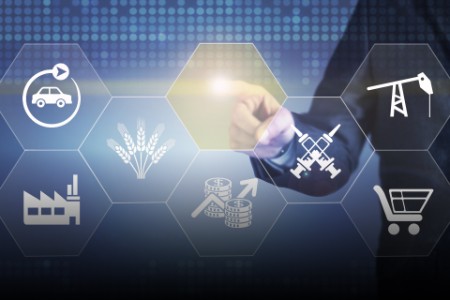
Chapter 1
Ease of doing business
Improving the ease of doing business parameters and reducing the regulatory and compliance burdens for enterprises in India would be key to enhancing competitiveness.
Ease of doing business is the key to fostering entrepreneurship, innovation, investment, competitiveness and enabling faster economic growth. Simplifying and maintaining a business-friendly environment is a pre-requisite to a fast growth path.
Improving ease-of-doing-business has been a key focus area of the GoI. Steps like the introduction of GST, implementation of the insolvency code, leveraging digital tools and making tax assessments faceless, IT-enablement of many processes for getting permits and certificates, simplification of labor laws, repealing several old laws to lower the regulatory burden, are all steps in the direction of making it easier to do business in India.
Enforceability of Indian Contract Act
Our survey highlighted that the single biggest constraint to ease of doing business in India is its inability to enforce contracts effectively and resolve disputes. One of the outcomes of this weakness is that some areas have now become over-regulated. A recent EY report, “Opportunities and expectations of MNCs” listed this among the four key issues for ease of doing business in India. Given the potential economic and social multipliers of a well-functioning legal system, timely dispute resolution and confidence in contract enforcement would go a long way in driving economic growth.
Payment of taxes
Over the last few years, India has undertaken consistent and focused tax policy initiatives that include moderating direct tax rates, rationalizing the current tax law for simplicity and clarity, bringing technology-backed transparent administration and ease of compliance for taxpayers, and minimizing potential litigation. While the above changes have made it easier to do business in India, there continue to be issues which lead to tax uncertainty. There are instances of tax disputes often due to aggressive positions that may be taken. Further, at times, the rules are drafted in a manner that leads to ambiguity in interpretation. There can be delays in resolving these through Alternate Dispute Resolution (ADR) mechanisms, due to inadequate capacity/resources.
Decriminalization of economic laws/offences
In some economic regulations, even for minor transgressions, instead of using financial penalties as a tool to ensure enforcement, often the laws provide for criminal penalties. Such provisions increase uncertainty, hamper decision-making, and can also be a tool for harassment. The GoI is cognizant of this issue and is taking suitable steps to decriminalize laws. Faster and more focused action is required since each provision that needs to be decriminalized needs to be studied carefully and the amendments go through a parliamentary process.
Similarly, from an ease of doing business perspective, there are a few other areas where businesses are challenged, such as compliance with environmental regulations or regulations related to trading across borders. While this continues to be an important agenda item of the GoI, relentless focus of the Government is required for faster progress.

Chapter 2
Macro-economic stabilization measures
Stabilization policies that actively de-risk the economy will further improve India’s growth sustainability factor.
Incidences of the last few years such as the pandemic and the recent geo-political unrest have underscored the pivotal role of the government in addressing risks and ensuring macro-economic stability both in the short-term and the long-term. While the GoI has been strategic in its macro-fiscal response during the pandemic and the geo-political conflict, continued prudent macro-economic management focused on managing and stabilizing exchange rate, ensuring predictability in policies and pro-actively de-risking the economy would further enhance India’s ability to sustain high levels of growth over an extended period.
Adhering to fiscal discipline
The central and the state governments need to ensure that their revenue and fiscal deficits relative to GDP are within sustainable limits. If governments’ revenue accounts are kept in balance or in surplus, government capital expenditure can be financed by a sustainable level of fiscal deficit augmented by non-debt capital receipts. Prudent fiscal management should ensure that unsustainable subsidies should not be committed to short-term welfare objectives. Instead, maximum policy attention should be focused on increasing employment, especially using investments in infrastructure and funding enhanced expenditure on education and healthcare, that improve long-term competitiveness.
Boosting savings to uplift investment and growth
The government would do well to emphasize the augmentation of savings and investment rates in India. Domestic savings, net capital inflows (or foreign capital coming in) and withdrawals from foreign exchange reserves finance most investments in India. Since FY2008, Gross Capital Formation (GCF) has averaged around 35% of GDP. Domestic savings have been the primary source for financing this investment.
With capital as a scarce factor, it is crucial to ensure that the savings rate is boosted while attracting higher levels of global capital to further uplift investments and thereby increase growth.
Prioritizing education and health
Considering India’s accelerating working age population ratio, it is imperative to ensure that the workforce is educated, skilled and healthy, making them suitable for emerging employment opportunities, within and outside the country. India’s combined government expenditure on education was at 3.1% of GDP and for health at 1.4% in FY22. These levels need to be increased further to take advantage of the unfolding demographic trends.
Through the pandemic, there has been a significant boost to the spending on health that will likely persist for the next several years with many multi-year projects that will improve the healthcare in India. This includes initiatives from boosting the number of medical colleges attached to hospitals, significantly upgrading tertiary facilities, to an unprecedented base of the pyramid health insurance program. The transformation in healthcare is already well underway.
While India produces many STEM graduates and has been supplying talent for global IT development. However, its education system has weaknesses. For instance, although graduates from India’s premier institutions are sought after, unfortunately, these institutions are not counted among the top-notch global institutions of research and rank relatively low in global rankings. Similarly, the secondary school education has weaknesses such as high student to teacher ratios, lack of contracts for more than 60% of teachers in non-government schools.
Recognizing the importance of a robust education system, the GoI has formulated the National Education Policy (NEP) 2020, which proposes some major reforms pertaining to the K-12 and higher education systems in the country. The success of the policy would largely depend on its implementation.

Chapter 3
Power sector reforms, energy independence and urbanization in India
There is an opportunity to develop an India-focused model, with a greater emphasis on sustainable development.
A reliable and low-cost electricity supply is an essential input for economic activity and to attract investments. Conversely, high electricity costs and electricity shortages act as a disincentive to investment, bring down competitiveness, and increase complexity (for example, the need to make additional investments for captive generation capacity) resulting in reduced efficiency.
India has one of the largest and most complex power sectors in the world. While the past few years have seen significant changes, such as increased electricity access to Indian citizens, a decline in power deficiency, and an increase in power generation including renewable energy capacity. However, the sector still faces significant challenges. Most power distribution companies (or discoms) incur losses every year—estimated at INR900b (approximately US$11.3b) in FY21. Due to these accumulated losses, discoms are unable to pay to generators on time. Poor financial health hampers investments necessary to ensure continuous high-quality power. With the GoI working on transitioning to emission free electricity, increased investments would be required in the Indian power sector.
The government has been cognizant of the issues involved in the power sector. However, reforming the sector and making it financially strong, whereby it can attract investments on their own without government subsidies, is challenging. Nevertheless, energy policies need to be made such that the power sector becomes self-sustaining.
Policies for energy independence in India
There is a need to continually reduce India’s dependence on imported energy. The GoI has been addressing this issue by providing attractive fiscal terms for fresh exploration of oil and gas, incentivizing the development of coal mining capacity, incentivizing production, and blending of ethanol with petrol and accelerating the pace of the pursuit of non-conventional energy sources. In this context, the National Hydrogen Mission envisages India to become a large producer and user of hydrogen. However, large-scale transformation of the energy system is a long-drawn process that requires both technological advancements and a significant amount of capital.
As the world moves forward with decarbonization and India develops new capacities, access to critical minerals like lithium and other rare earths would become important. Access to these materials could make countries vulnerable in the future. Therefore, strategies to address any such potential vulnerabilities would be extremely important.
Urbanization paradigm
India is the second-largest urban system globally, with nearly 11% of the total global urban population living in Indian cities. The UN has estimated that Indian cities contribute nearly 60% to the GDP. India’s urbanization rate would exceed 50% by 2046 from nearly 36% in 2023. This brings out the pivotal role that urbanization is expected to play in the achievement of India’s long-term economic and sustainable growth targets. Realizing this potential requires addressing some key challenges.
Despite a sharp increase projected in India’s urbanization rate, it would remain tangibly below the levels achieved by other major countries. The extent of actual urbanization in India may be much higher than what the official data shows. In this context, there is a need to bring census towns under the ambit of urban entailing application of urban regulations in these areas.
India needs to develop its own urbanization paradigm, learning from urbanization experiences of other highly urbanized nations. Substantial investment in developing urban infrastructure focused on transportation, affordable housing, drainage, waste management, and green spaces is required for Indian cities to harness their full potential. Planning and building dual use infrastructure in urban centers meant to serve both peace time requirements and crisis related emergencies would help cope with unanticipated exogenous shocks.
Related content
Summary
As we crystal-gaze into the 100th year of India’s independence, we certainly hope that India exceeds our growth projections and accomplish its vision of India@100 in the future, with an equal and strong focus on providing inclusive and equitable opportunities, access to education, skills and better health, covering all sections of the population including women and economically and socially disadvantaged.



